Five Big Conservation Wins for Birds in 2016
Throughout 2016, ABC and our partners advanced conservation for many birds across the Americas, from well-loved migratory birds like the Long-billed Curlew to little-known, rare species such as Stresemann's Bristlefront. Here are a few of our conservation wins from the past year.
Endangered Seabirds Relocated to New Home in Hawai'i
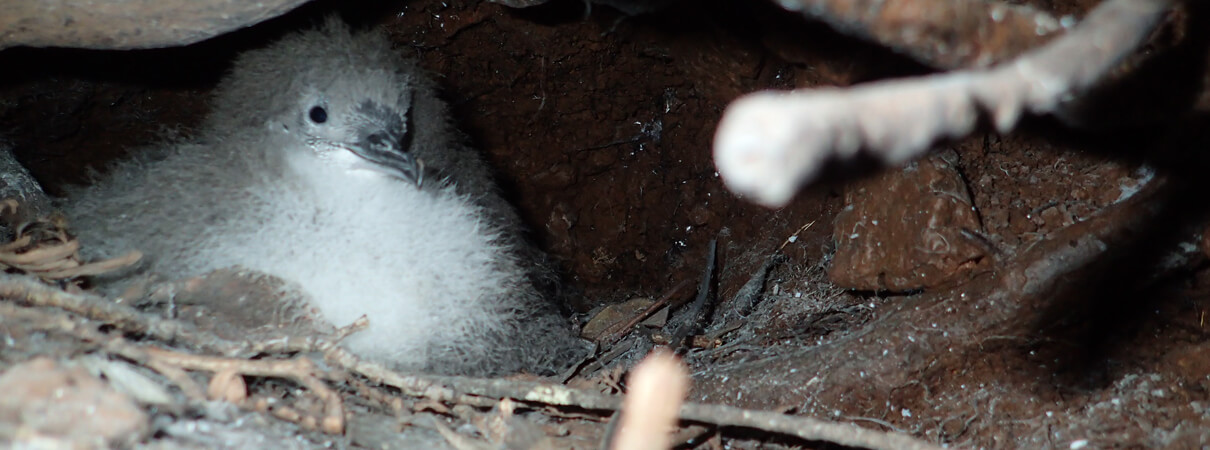
A Newell's Shearwater chick in its mountain burrow. Photo by Andre Raine, Kauai Endangered Seabird Recovery Project
In 2015, a consortium of partners (including ABC) successfully moved 10 Hawaiian Petrel chicks from their established mountain colonies to a new, protected colony within Kilauea Point National Wildlife Refuge. The chicks thrived. And, in 2016, the collaborators did it again, this time relocating eight Newell's Shearwater chicks to new, artificial burrows within the same protected area. This was the first-ever translocation of Newell's Shearwater chicks.
Both Newell's Shearwaters and Hawaiian Petrels are endemic to the Hawai'i, which means they are found nowhere else in the world. As with many of Hawai'i's birds, the two ground-nesting seabirds are threatened by introduced predators. By translocating chicks to the predator-free and protected site in Kilauea Point Wildlife Refuge, ABC and its partners hope to establish a new nesting colony of these birds, where they will remain safe from predators.
It will be several years before their success is known—Newell's Shearwaters reach breeding age after three to five years.
Read more about the 2016 translocation of Newell's Shearwater chicks. | Read more about the 2015 translocation of Hawaiian Petrel chicks.
Conservation Guidelines Protect Birds from Pipes and Lights

Black-tailed Gnatcatcher is one of the species that enters open pipes and becomes trapped. Photo by John L. Absher, Shutterstock
Every year, millions of birds are killed when they collide with communications towers or become trapped inside open pipes, such as those used to mark mining claims. New federal guidelines encouraged by ABC and enacted in 2016 will help reduce the number of birds impacted by these two threats.
Communications towers often use steady-burning lights to alert pilots to the tower's presence at night or in low-light conditions. Unfortunately, these same lights attract and disorient night-flying birds—especially migratory birds—and contribute to millions of bird deaths. In 2016, the Federal Communications Commission (FCC) and Federal Aviation Administration (FAA) released new guidelines that strongly encourage tower operators to turn off or reprogram their steady-burning red or white lights in favor of flashing lights, which are less harmful to birds yet still alert pilots to the towers' presence.
As of late October 2016, operators of more than 750 tall towers nationwide had already updated their lighting systems under the new guidelines. Read more about the new guidelines for communication tower lighting.
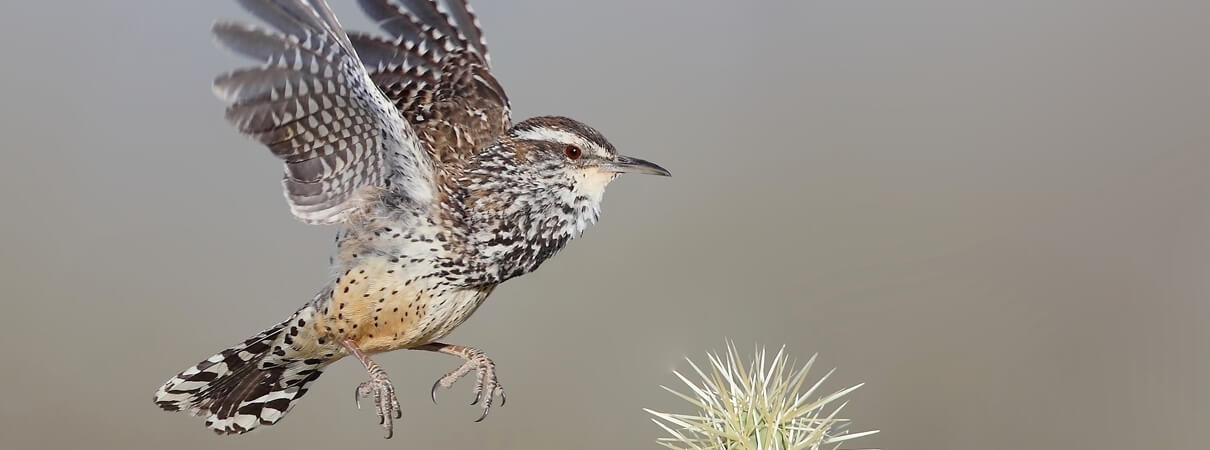
Cactus Wren, another species that frequently falls victim to open pipes. Photo by Dan Behm
Another challenge to birds—uncapped pipes used to mark mining claims and property boundaries—can also prove fatal. The pipes are most dangerous to cavity-nesting birds that enter the pipe believing it to be a potential nesting site and then finding themselves trapped and unable to climb up the smooth interior of the pipe. As many as 30 dead birds have been found inside a single pipe.
To address this threat, the Bureau of Land Management (BLM) issued a memorandum in late February 2016 calling for BLM staff to identify all vertical pipes on BLM-managed lands and to cap, close, remove, or screen them. In addition, all vertical pipes on future facilities must have permanent caps or screens to prevent harm to wildlife. Mine-claim holders are also being encouraged to voluntarily remove PVC pipes used as mine markers and to replace them with wildlife-safe markers. Read more about the guidelines for open pipes.
Habitat Protected for Two of Brazil's Most Endangered Birds
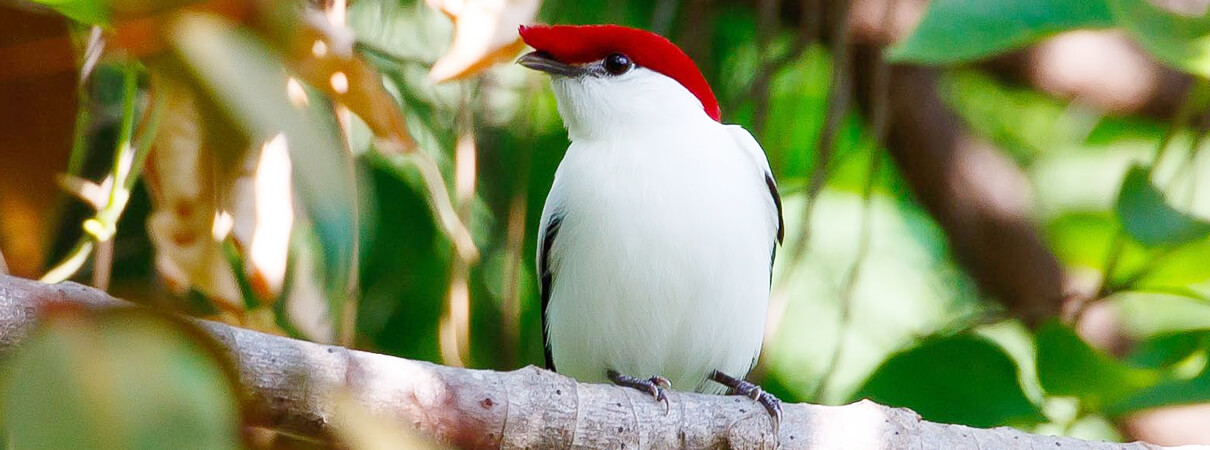
Araripe Manakin, Maggie Forrester
Working with partners in 2016, ABC helped secure new habitat protections for two of Brazil's most endangered endemic birds—the Araripe Manakin and Stresemann's Bristlefront.
The striking red-and-white Araripe Manakin is found only in Brazil and is now believed to number fewer than 1,000 individuals. In December 2016, ABC and our Brazilian partner Aquasis secured more than 170 acres of critical habitat for this stunning species. The acquisition roughly doubled the size of the existing Araripe Oasis Reserve in northeastern Brazil and connects it to the much-larger Araripe National Forest. The expansion will potentially provide new breeding territories for this manakin and other rare species. Read the full story.
Elsewhere in Brazil, the only known population of Stresemann's Bristlefront—a species once presumed extinct—makes its home in the much-diminished Atlantic Forest. Fewer than 15 of these birds are believed to exist today, making this one of the most endangered species in the world and one of our top conservation priorities. In 2016, ABC and our Brazilian partner Fundação Biodiversitas secured a tract of the species' Atlantic Forest habitat, adding 766 acres to the 1,586-acre Mata do Passarinho Reserve. Read the full story.
El Oro Parakeet Benefits from Reserve Expansion
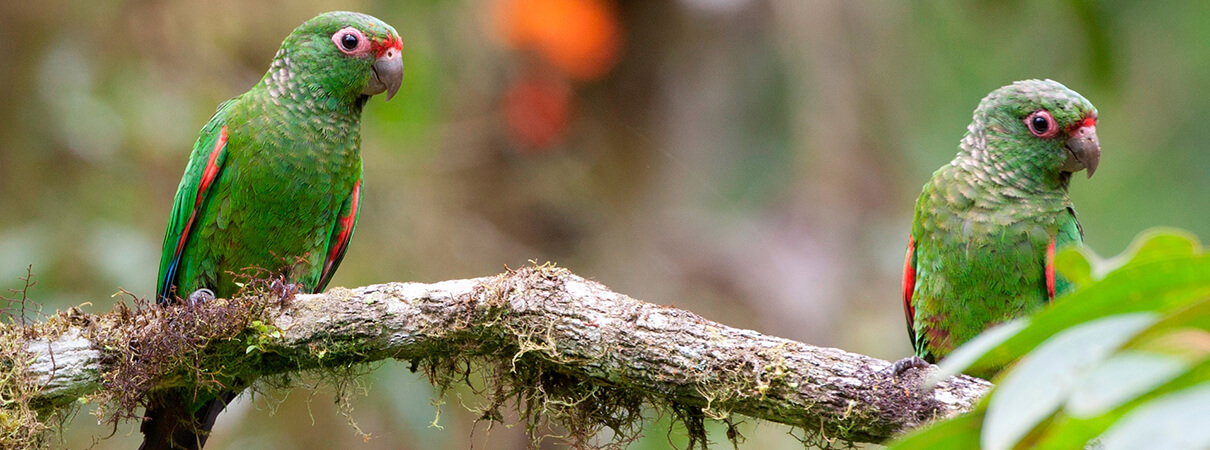
El Oro Parakeets. Photo courtesy Fundación Jocotoco.
The colorful, highly social El Oro Parakeet was only discovered in 1980, and its range is limited to a few areas on the western slope of the Andes in southwestern Ecuador. That rarity makes its conservation a top ABC priority.
In 2016, we worked with our Ecuadorian partner, Fundación Jocotoco, and U.K.-based international conservation group World Land Trust to add 233 acres of critically important cloud-forest habitat to the Buenaventura Reserve, which remains the only protected area for the species. The acquisition expanded the existing Buenaventura Reserve from 5,583 acres (2,259 hectares) to 5,816 acres (2,354 hectares), and contributed to an ecological corridor that will connect Buenventura to three proposed government reserves. Read the full story.
A Big Year for Conservation in Birdscapes
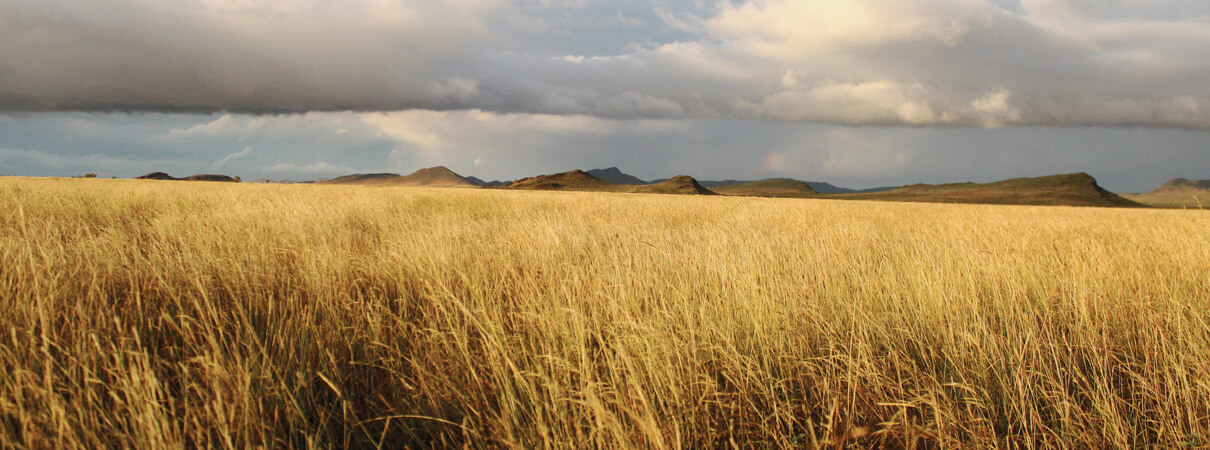
Restored grasslands on Coyamito Ranch in Chihuahua, Mexico. A different approach to cattle grazing has breathed new life into an area essential for grassland birds. Photo by Lilia Vela
Over the last three years, ABC has gathered the best science about migratory birds, analyzed the data, and designated important large-scale areas—places we're calling Birdscapes—that we must protect and restore to reverse the downward spiral of entire suites of declining migratory birds. These range from grassland birds like the Long-billed Curlew and Sprague's Pipit to young forest birds like the Golden-winged Warbler and American Woodcock.
In 2016, ABC and partners worked together to advance on-the-ground work in 10 Birdscapes spread across six Latin American countries. We supported the planting of more than 300,000 trees in areas important to migratory birds; employed state-of-the-art science to track the migration of birds like Elmer, a Cerulean Warbler; and continued work with ranchers in Mexico and the Northern Great Plains to implement grazing practices that benefit birds, cattle and the ranchers themselves.
Stay tuned for more Birdscapes updates in the weeks to come!
Editor's note: To learn more about how ABC's conservation framework takes shape on the ground, explore our conservation programs, including International, Oceans and Islands, Migratory Birds, and Policy & Advocacy.


















































